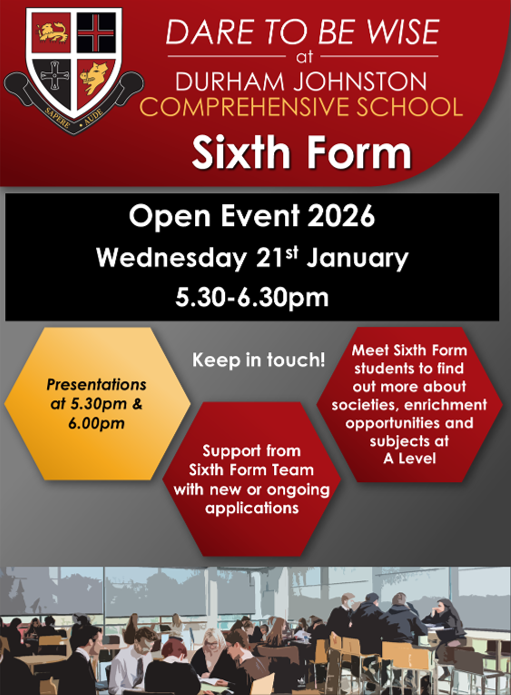15 November 2019

What is the value of education?
There has been a significant focus in recent years on the cost of education and it is apparent to all that education has been underfunded in recent years, to the extent that the majority of schools have struggled in some way. Teaching staff, resources and, somewhat worryingly, days within the school week have been cut in order for some schools to stay afloat. If you are looking for a measure of how some people must value the nation’s children, then that is a development that far outweighs the stories of Headteachers buying resources or cleaning toilets. All political parties are now indicating that they will spend lavishly, even those who imposed those very cuts in the first place. However, other people are capable of writing much more eloquently about the true picture of educational funding than I will here. For example, the following is from Carolyn Robert’s, current Headteacher of Thomas Tallis school and previously at Durham Johnston, and offers an overview of the decrease in spending in real terms in recent years. The figures are based upon additional (and welcome) funding proposals made by the government prior to the general election being called.
- Spending by local authorities on services for children and young people is increasingly focused on mandatory elements and responses to crises. Spending on children looked after by the state is up nearly 20% since 2010 and spending on children’s social care is up 9%. However, spending on preventative services has been cut significantly. Spending on Sure Start is down 62% and spending on services for young people is down 65%.
- Extra funding announced in the spending round effectively reverses past cuts to school spending per pupil.
- Total per-pupil spending on schools in England has fallen by about 8% in real terms since 2009–10. This is largely driven by a 57% cut in spending per pupil on services provided by local authorities and a cut of more than 20% in sixth-form funding per pupil.
- Funding per pupil in primary and secondary schools fell by 5% in real terms between 2015–16 and 2019–20.
- The government proposes teacher starting salaries of £30,000 for 2022, an increase of about £6,000 or 23% on current levels. Few details are available on how this will be delivered, but such details will be very important in determining likely pressures on school budgets.
- Despite the increase announced for 2020, funding per student aged 16–18 has seen the biggest squeeze of all stages of education in recent years. School sixth forms have faced budget cuts of 23% per student since their peak in 2010–11. The 2019 Spending Round allocated a further £300 million for 2020–21. This represents a 4% real-terms increase in spending per student, but will still leave spending per student in further education over 7% down on 2010.
- Student numbers are growing, so an additional £300 million on top of current plans would be required by 2022–23 just to avoid further cuts in per-student funding. Fully reversing cuts since 2010–11 would cost £1.1 billion on top of current plans by 2022–23.
How we choose to fund education is quite clearly a political choice and my purpose is not to express any form of party political opinion here; after 23 years as a teacher, I am of the firm belief that national politicians should generally be kept at arm’s length: at their best they are well intentioned, happy amateurs who tend to function only in the immediate or short-term; at their worst they personalise education, basing their views on what did or didn’t work for them.
It is common for discussion of education to focus upon funding or politics and the actual ‘value’ of education gets lost. An exclusive focus upon cost can suggest that educating children is primarily a transactional process. In addition to a focus on cost and value for money, corporate language has come to dominate educational policy and professional standards too. Teachers have been judged on their ‘performance’, being observed as they ‘perform’ in the  classroom and have been set numerical targets intended to ‘hold them to account.’ In a previous life, I worked in banking (feel free to start the pantomime booing now) and my worth and ‘performance’ as an employee was measured by profit, or the number of shares that I managed to trade. I was actively encouraged to view colleagues as rivals and competitors. That model and language should be anathema to school leaders. Success and value should be measured by much more than performance tables at the end of 5 or 7 years. Schools are communities that work on the basis of collective endeavour and, whilst it is clear that individual teachers can make an enormous difference, success is based upon a variety of interrelated factors that defy easy categorisation. Education isn't a production line. Are schools sometimes culpable themselves of confusing cost and value? There are examples of schools paying students to reach attendance and exam targets. Obviously, each school has a different context, but what value does that place on education? Matthew Syed recently wrote in The Times on the implications of this approach more broadly;
classroom and have been set numerical targets intended to ‘hold them to account.’ In a previous life, I worked in banking (feel free to start the pantomime booing now) and my worth and ‘performance’ as an employee was measured by profit, or the number of shares that I managed to trade. I was actively encouraged to view colleagues as rivals and competitors. That model and language should be anathema to school leaders. Success and value should be measured by much more than performance tables at the end of 5 or 7 years. Schools are communities that work on the basis of collective endeavour and, whilst it is clear that individual teachers can make an enormous difference, success is based upon a variety of interrelated factors that defy easy categorisation. Education isn't a production line. Are schools sometimes culpable themselves of confusing cost and value? There are examples of schools paying students to reach attendance and exam targets. Obviously, each school has a different context, but what value does that place on education? Matthew Syed recently wrote in The Times on the implications of this approach more broadly;
“Mark Lepper and David Greene, two social psychologists, spent time observing children during free play in the classroom and noted that some took an interest in drawing. These kids sought the chance to draw and spontaneously asked for crayons and paper. The experimenters then took these youngsters and placed them in two different conditions. One group of children were each shown a glossy certificate, adorned with their name, and asked if they would like to receive it in return for drawing. A second group were not promised anything at all, but continued to draw anyway.
Two weeks later, the psychologists returned to observe the children from these groups during free play. The no-reward group continued to seek out pens and paper, just as before. Those who had received a glossy certificate, on the other hand, showed significantly less interest. As the author, Daniel Pink put it: “Their motivation seemed to have sprung a leak.” What was going on? Decades of studies on adults have revealed the same results: offering extrinsic rewards runs the risk of making an activity “transactional”. When drawing was positioned as a means to an end (getting a certificate), it corroded the children’s desire to draw for its own sake. It crowded out the deeper reasons why youngsters wish to draw and create. As one psychologist put it: “People use rewards expecting to increase another person’s motivation, but in so doing, they often incur the unintentional and hidden cost of undermining intrinsic motivation.”
Therefore, what is the value of education?
It clearly isn’t transactional, but a good education can and should be a passport to future economic success and happiness. Our ethos is based upon students acquiring knowledge, knowing things and becoming educated individuals. Those aren’t intended to just be empty, optimistic aspirations, but are fundamental in measuring the real value of education at our school. Education should be a creative process that stimulates thought, that makes young people connect knowledge and that provides a sense of purpose and opportunity. But is being educated valued more highly than simply acquiring a grade or level that implies success or status for an individual, school or, in the broadest sense, a nation? Does it really have a dramatic impact on the future of the UK if students in Finland or Singapore are perceived to be ‘outperforming’ them? As a parent what matters more to you, that your child is well educated and content, or that they simply achieve the necessary grades? Both are important, but which do you value more?
 Perhaps the best measure of the value of education is how people react when it is either withdrawn from, or denied, them. The image opening this blog is of Elizabeth Eckford, one of nine students who was brave enough to test whether the 1954 Brown Versus the Board of Education Supreme Court judgement, which allowed for the desegregation education in the USA, would be upheld in Little Rock, Arkansas. The students were confronted by racism and aggression on a daily basis until President Eisenhower chose to intervene and enforce their right to be educated. The image to the left is of school children in Ardoyne, Belfast who struggled to attend school on a daily basis in 2002 because of the sectarian behaviour of adults, who put their political views above the need for children to be educated safely.
Perhaps the best measure of the value of education is how people react when it is either withdrawn from, or denied, them. The image opening this blog is of Elizabeth Eckford, one of nine students who was brave enough to test whether the 1954 Brown Versus the Board of Education Supreme Court judgement, which allowed for the desegregation education in the USA, would be upheld in Little Rock, Arkansas. The students were confronted by racism and aggression on a daily basis until President Eisenhower chose to intervene and enforce their right to be educated. The image to the left is of school children in Ardoyne, Belfast who struggled to attend school on a daily basis in 2002 because of the sectarian behaviour of adults, who put their political views above the need for children to be educated safely.
In Kenya the Maasai greet each other with a question, Kasserian Ingera? Not "how do you do" or "how's it going", but "how goes it with our children"? Maybe that is a better comparative measure of success than the mathematical ability of children in Hong Kong. If we were to replicate their approach, we might well start to see that the long-term value and importance of education is based upon what helps young people to develop.
Mr O’Sullivan

